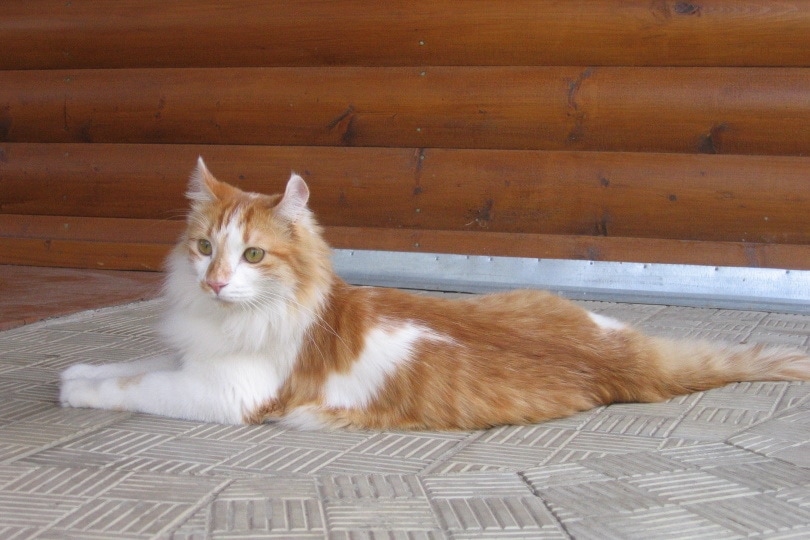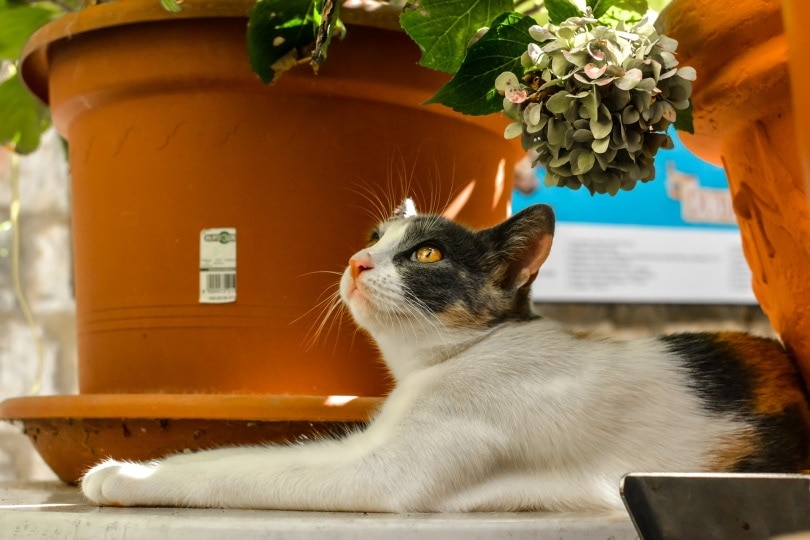Cats can be troublemakers at times, and they tend to be stubborn more often than not. They have a mind of their own, which can result in bad habits that we owners simply do not want to deal with every day. Whether it is clawing up the furniture, playing with the kids too roughly, or meowing throughout the night, there are things that you can do to effectively discipline your cat and get them to stop doing the things that you do not approve of. However, before we get into effective discipline options, we should discuss what kind of discipline is not effective and should never be utilized.
Physical Discipline Does Not Work and Shouldn’t Be Utilized
Physical discipline should never be used when trying to correct the behavior of your cat. Not only can physical discipline be painful, but it can also result in undesirable behavior as time goes on, such as fear of humans, anxiety, and extreme shyness. Physical discipline will likely not stop your cat from doing the behaviors that you are disciplining when all is said and done. Therefore, it is best to avoid physical discipline and instead, consider a more effective discipline option.
1. Use Your Words

Using your voice may be all it takes to get your cat to stop a behavior that you do not approve of. Choose a specific word to say, such as “quiet” or “stop,” any time your cat does something that you do not want them to. Whenever you catch undesirable behavior, say your chosen word in a stern voice while directing all your attention toward your cat.
This should stop your cat in their tracks while they try to figure out what is going on. They will likely redirect their attention to something else and stop doing whatever it is that you do not want them doing. It is important to use the same word and the same tone every time you discipline your cat so they can tell the difference between discipline and general interaction.
2. Make Noise

Making a kind of startling noise is a great way to get your cat’s attention and keep them from continuing the behavior you disapprove of. This method may work for cats that do not react to your voice commands when trying to get them to stop a certain behavior. Ways that you can make noise to get your cat’s attention and stop them from doing unwanted behavior include:
- Clapping your hands together
- Whistling
- Stomping a foot on the floor
- Tapping a pot with a wooden spoon
Try different noises to see which work best for your cat. Once you find one or two that work, stick with those noise-making techniques to create and maintain consistency.
3. Redirect Attention

Another discipline technique to try when dealing with your kitty is redirection. Whenever you catch your cat messing with the curtains or doing something else that you prefer them not to do, grab one of their toys or something flashy to get their attention. Once their attention is caught, spend time playing with them or directing them to their toys and other items that they are allowed to interact with. Hopefully, the redirection will make your cat forget all about the unwanted behavior that they were displaying in the first place.
4. Engage in Play Time

Playing with your cat for at least 20 minutes each day is a great way to make sure that they get the exercise and mind stimulation that they need to avoid getting bored and destructive. If your cat’s mind and body are satisfied, they will be less likely to become destructive and curious, which are things that can get them in trouble with their human family members.
You can spend time throwing balls for your cat to chase, working on training, playing a game of chase or hide-and-seek, or heading outside for a walk on a leash. The idea is to simply get your cat’s body and brain moving so they get satisfaction from their day and stop trying to destroy your belongings or cause trouble within the household.
5. Set “Traps”

To keep your cat out of the cupboards and other places where you do not want your cat snooping around, you can set a “trap” for them that will startle them and shoo them away. A “trap” can simply be a couple of cans tied together with a string and then hung up in front of the cupboard door or other space where you do not want your cat to get into.
When they do try to infiltrate the space, the cans will clink together, and your cat will likely go the other way and steer clear of the area. After a time or two of running into the “trap,” chances are that your cat will have no interest in going near the area. You can then take the “traps” down without worrying about your cat working their way back to the restricted area.
6. Encourage Good Behavior

Encouraging your cat’s good behavior is another effective way to reduce the unwanted behaviors that they display as time goes on. Rewarding your cat with treats whenever they do something that you approve of and disciplining them whenever they do something you do not approve of will create a pattern that your cat will recognize and respond to.
They would rather get a treat than a snub, so they will spend more of their time trying to please you to get your encouragement rather than upset you. Treats are not the only ways to encourage your cat to behave well. A petting session, a kiss on the nose, and a lap cuddle are other options that you can try. Go with what your cat loves most to get the best results.
Final Thoughts
Cats may be troublemakers at times, but they offer so much more for their family members to enjoy. They are curious, playful, cuddly, and full of personality. While there are times to discipline your cat, it is important to remember that we cannot control their every movement. Your cat deserves the opportunity to display their unique personality. Do not use discipline to change your cat’s overall actions. Reserve it for when your cat is doing something that endangers themselves or someone or something else within your household. How do you feel about disciplining cats? We want to know your thoughts!
Featured Image Credit: Kutikova Ekaterina, Shutterstock





